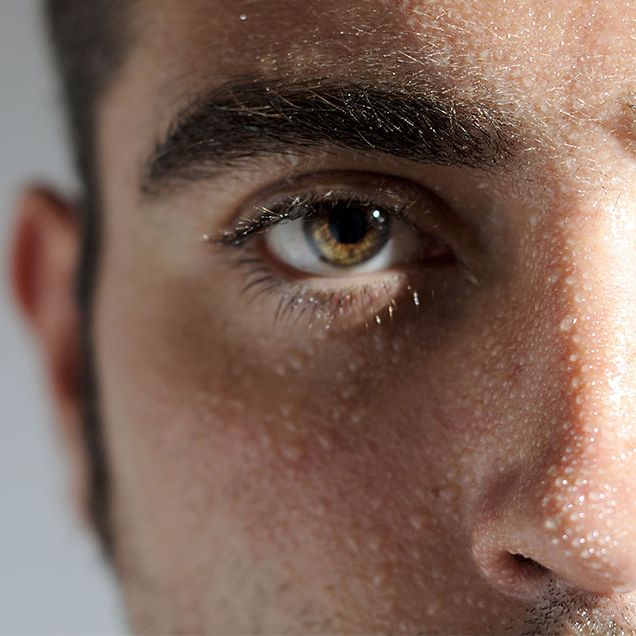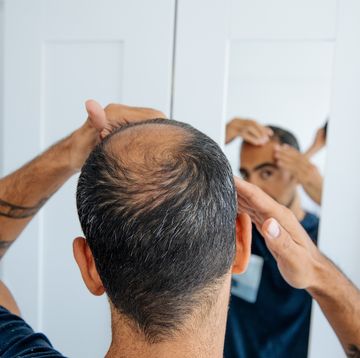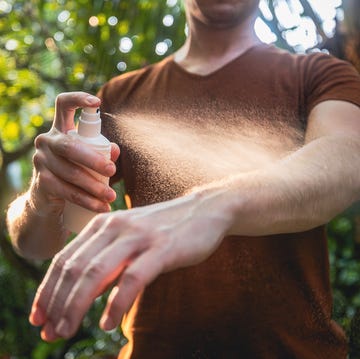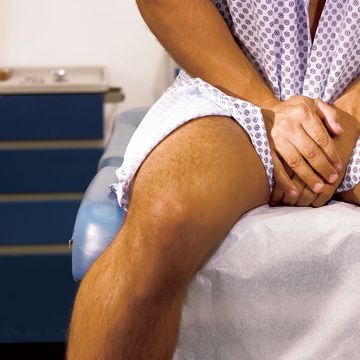Hives are confusing: The oddly-shaped reddish spots can disappear and reappear fast.
As it turns out, these transient little buggers are actually quite common—they affect about 20 percent of people at some point, says Whitney Bowe, M.D., a New York-based dermatologist.
So, there’s a decent chance you may experience hives in your lifetime.
Although the cause is sometimes obvious (if you’re allergic to peanuts and you accidentally eat one, the welts may appear almost immediately), oftentimes it can be difficult to figure out why you have hives.
Related: 9 Weird Things That Make Your Allergies Worse
The good news is that, for the most part, they don’t last more than 24 hours and are easily treated with antihistamines, according to the American College of Allergy, Asthma, and Immunology.
Here are a few reasons why you might find yourself covered in splotches:
1. You Take Certain Medications
Non-steroidal anti-inflammatories (like aspirin and and ibuprofen), opioids (like morphine and oxycodone), and antibiotics (like penicillin), can all make you break out in hives, says Bruce Brod, M.D., clinical professor of dermatology at the Perleman School of Medicine at the University of Pennsylvania.
According to the American Academy of Allergy, Asthma, and Immunology, hives will usually develop within an hour of popping the pill.
Related: What’s That Rash On Your Body?
2. You’re Stressed
Another reason to take a deep breath: Intense emotions can prompt hives.
That’s because stress causes your immune system to falter, making you more susceptible to skin issues. Typically, stress hives are short-lived, lasting less than a day, says Dr. Brod.
3. You Got Really Sweaty
According to the World Allergy Organization, heat-induced hives (which can be caused by exercise, hot showers, sweating, and anxiety), generally start on the neck and upper chest and spread to the face, back, and extremities.
If this happens to you regularly, Dr. Bowe suggests consulting your doctor, who can put you on an antihistamine regimen.
4. You Came Into Contact with an Allergen in the Environment
Environmental factors that can spark an outbreak include sunlight, heat, cold, grass, pollen, and dust mites, says Lauren Ploch, M.D., a dermatologist in Augusta, Georgia.
Related: 3 Ways to Outsmart Allergies
5. You’re Wearing Too-Tight Clothes
“Some people will develop hives in areas where there is more pressure on the skin, such as on the bottom of their feet and underneath tightly-fitting clothing or underwear,” says Dr. Brod.
He recommends resisting the urge to scratch—and wearing loose-fitting clothing.
Related: Why Scratching an Itch Makes It Worse
6. You Have an Autoimmune Disease
If you still have hives after an extended period of time (a month or more), an autoimmune disease may be to blame.
“Lupus or thyroid disease can cause hives,” says Dr. Ploch, who adds that type 1 diabetes, Sjogren's syndrome, and celiac disease could also be to blame.
Attributing hives to an autoimmune disease is often a process of elimination, though, she says, so it’s important to check in with your doctor.
7. You Ate—or Drank—Something Weird
Alcohol and some foods can cause hives.
“We see a lot of allergic reactions from food and food additives, which is where things can get confusing because it’s not necessarily the food itself,” says Dr. Ploch.
Common culprits include shellfish, eggs, and nuts, while Dr. Ploch notes that azo food dyes in candy (red, yellow, and orange colors) and the sulfites in wine and deli meat can cause hives, too.
Related: 12 Common Skin Problems—and How to Fix Them
If hives are issue for you, it’s important to take a careful history of what you eat so that you can avoid those triggers in the future, says Dr. Ploch.
The article 7 Reasons Why You Might Be Breaking Out in Hives originally ran on WomensHealthMag.com













